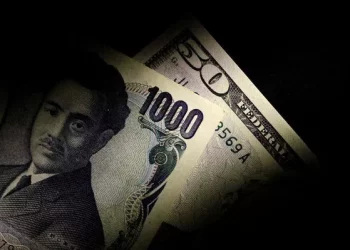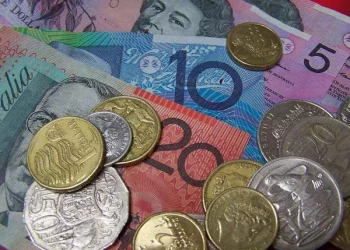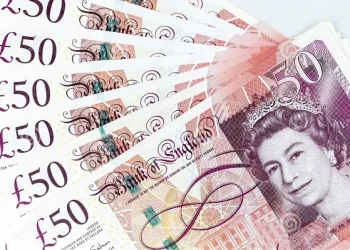In the world of foreign exchange (forex), currency values fluctuate continuously due to numerous economic, political, and market forces. Traders, investors, and economists closely monitor these fluctuations to assess the relative strength of one currency against another. The Pakistani Rupee (PKR) and the Japanese Yen (JPY) are two such currencies that frequently make headlines, especially when discussions turn toward emerging market currencies and the relative strength of the Yen as a safe-haven asset. One of the fundamental questions often posed in this context is: Which of these two currencies is cheaper?
To answer this, we need to delve into the dynamics of currency values, the underlying factors that drive their strength, and the broader economic context that influences their exchange rates. In this article, we will compare the Pakistani Rupee and the Japanese Yen from multiple perspectives, including their historical performance, economic factors, and current exchange rate trends.
Understanding Currency Valuation
Before determining which currency is “cheaper,” it is important to define what we mean by “cheaper” in the context of forex markets. In forex trading, a currency is considered “cheap” when its value is lower relative to other currencies. The value of a currency is determined by various factors, including:
Interest Rates – Central banks set interest rates to control inflation, manage economic growth, and stabilize their currencies. Higher interest rates typically attract foreign investment, which strengthens a currency.
Inflation – A country with lower inflation generally sees its currency value appreciate over time because purchasing power is more stable.
Economic Growth – A strong and growing economy attracts foreign investment, which increases demand for the local currency and drives up its value.
Political Stability – Political events can significantly affect the confidence of investors in a country’s currency, leading to fluctuations in value.
Trade Balance – Countries with a trade surplus (exports greater than imports) tend to see their currencies strengthen due to the increased demand for their currency to pay for goods and services.
Currency Pairs and Exchange Rates
In forex trading, currencies are quoted in pairs. When we compare the Pakistani Rupee (PKR) with the Japanese Yen (JPY), we typically look at the exchange rate between the two currencies. For example, if the exchange rate between the PKR and the JPY is 0.0072, this means that one Pakistani Rupee can be exchanged for 0.0072 Japanese Yen. Conversely, 1 Japanese Yen would be worth about 138.88 Pakistani Rupees.
The exchange rate is a direct reflection of market sentiment, economic factors, and geopolitical events affecting both countries. A higher exchange rate means the currency is stronger, while a lower exchange rate indicates that the currency is weaker or “cheaper.”
Historical Overview of the Pakistani Rupee (PKR)
The Pakistani Rupee has seen significant depreciation over the last few decades. The value of the PKR has been consistently declining due to a variety of factors, including economic instability, inflation, political uncertainty, and a growing trade deficit. In the 1980s, 1 USD was worth around 9 PKR, but by the early 2000s, the exchange rate had already increased to approximately 60 PKR per USD. As of today, the value of the Pakistani Rupee has dropped significantly, and the exchange rate with major currencies such as the USD, Euro, and Yen has reached new lows.
Economic Challenges Facing Pakistan
The weakening of the Pakistani Rupee is primarily attributed to Pakistan’s ongoing economic challenges. The country has faced chronic fiscal deficits, a growing trade imbalance, and a reliance on external borrowing to meet its financial obligations. Moreover, inflation in Pakistan has remained high, eroding the purchasing power of the PKR. These factors, coupled with political instability and security concerns, have led to a lack of investor confidence, which has further exacerbated the depreciation of the Rupee.
One of the significant factors contributing to the weakening of the PKR is the country’s trade deficit. Pakistan imports far more than it exports, which means there is a constant demand for foreign currencies to settle trade payments. This demand for foreign currencies, particularly the US Dollar and Japanese Yen, leads to a further decline in the value of the Rupee.
Historical Overview of the Japanese Yen (JPY)
The Japanese Yen is one of the most widely traded currencies in the world. It is known for its stability and strength, often acting as a safe-haven currency during times of economic uncertainty. Historically, the Yen has been one of the strongest currencies, especially in the post-World War II period, when Japan’s rapid industrialization and economic growth propelled it to become one of the largest economies in the world.
Japan’s Economic Policies and the Yen
Japan’s central bank, the Bank of Japan (BOJ), has implemented a series of aggressive monetary policies to manage its currency and economy. These policies include low-interest rates and large-scale quantitative easing (QE) programs, designed to stimulate economic activity and prevent deflation. While these measures have helped to stabilize the Japanese economy, they have also led to periods of Yen depreciation.
The Japanese Yen is also often seen as a “safe haven” currency, meaning that during times of global economic uncertainty or geopolitical tensions, investors tend to buy Yen as a store of value. This demand for the Yen has helped maintain its strength against other currencies, including the Pakistani Rupee.
Comparison of the Pakistani Rupee and the Japanese Yen
To understand which currency is cheaper, let’s look at the current exchange rates and other economic factors. As of the latest data:
1 Pakistani Rupee (PKR) = 0.0072 Japanese Yen (JPY)
1 Japanese Yen (JPY) = 138.88 Pakistani Rupees (PKR)
This exchange rate suggests that the Pakistani Rupee is significantly weaker than the Japanese Yen. In other words, the Pakistani Rupee is “cheaper” because a small amount of PKR can be exchanged for a larger amount of JPY.
Factors Influencing the Exchange Rate
Several key factors influence the exchange rate between the PKR and JPY:
1. Interest Rates and Monetary Policies
As mentioned earlier, interest rates play a significant role in currency valuations. The Bank of Japan has maintained a very low interest rate policy for many years to combat deflation and stimulate economic growth. This policy has kept the Yen relatively weaker compared to some other currencies, but it remains much stronger than the Pakistani Rupee due to Japan’s stronger economy, stable government, and robust industrial base.
On the other hand, Pakistan’s central bank has faced difficulty managing inflation and stabilizing the Rupee. With higher inflation rates and frequent adjustments to the PKR, investors often prefer the stability of the Yen over the more volatile Pakistani Rupee.
2. Inflation Rates
Inflation in Pakistan has remained persistently high, while Japan has managed to keep inflation relatively low. High inflation in Pakistan reduces the purchasing power of the Rupee, making it cheaper compared to the Yen, which has seen lower inflation rates.
3. Economic Growth and Stability
Japan’s economy, despite its challenges, remains one of the largest and most advanced in the world. Japan is a leading exporter of technology, automobiles, and machinery, which bolsters demand for the Yen. In contrast, Pakistan’s economy struggles with chronic deficits, political instability, and low industrial output. This economic imbalance puts further downward pressure on the Pakistani Rupee.
4. Trade Balances
Japan has a significant trade surplus, meaning it exports more than it imports. This creates demand for the Yen in international markets, supporting its value. Pakistan, however, has a persistent trade deficit, which means it imports more than it exports, increasing demand for foreign currencies and putting downward pressure on the PKR.
The Impact of External Factors
Geopolitical and global economic events also impact the value of the PKR and the JPY. For example, during periods of geopolitical instability or global financial crises, investors may flock to the Japanese Yen as a safe-haven currency, strengthening the JPY against other currencies, including the PKR.
In contrast, the value of the Pakistani Rupee is more susceptible to local political and economic developments, such as changes in government policy, the IMF bailout programs, or security concerns within Pakistan’s borders. These factors can cause the PKR to depreciate rapidly in response to external shocks.
Conclusion
Given the current exchange rates, the Pakistani Rupee is clearly cheaper than the Japanese Yen. A single Japanese Yen is worth significantly more than a single Pakistani Rupee, and the Rupee has faced continuous depreciation against a backdrop of economic challenges in Pakistan. The Yen, on the other hand, benefits from Japan’s stable economy, low inflation, and the demand for its exports.
However, it’s important to remember that the term “cheaper” refers to the relative value of a currency at any given moment, and exchange rates are constantly in flux due to various factors. While the PKR is currently weaker compared to the JPY, currency values can change based on market forces, economic performance, and geopolitical events.
In summary, as of now, the Pakistani Rupee is undoubtedly cheaper than the Japanese Yen. However, fluctuations in the forex market can always lead to changes in the relative value of these two currencies. Traders, investors, and policymakers alike must monitor the forex market closely to navigate these changes effectively.
Related Topics:

























